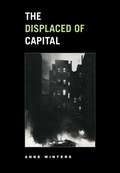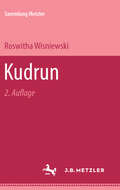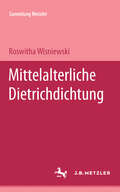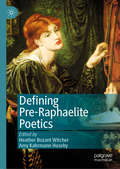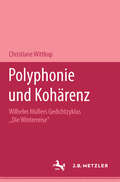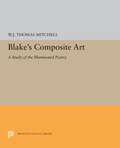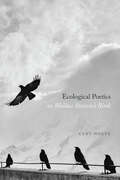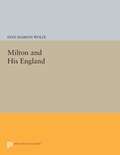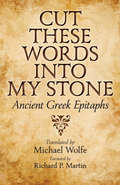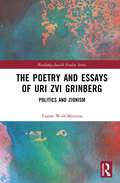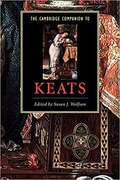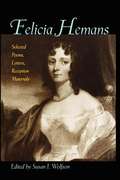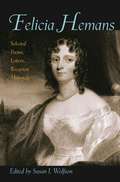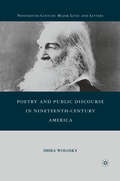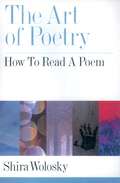- Table View
- List View
The Displaced of Capital (Phoenix Poets)
by Anne WintersWinner of the 2005 Lenore Marshall Poetry Prize. The long-awaited follow-up to The Key to the City—a finalist for the National Book Critics Circle Award in 1986—Anne Winters's The Displaced of Capital emanates a quiet and authoritative passion for social justice, embodying the voice of a subtle, sophisticated conscience. The "displaced" in the book's title refers to the poor, the homeless, and the disenfranchised who populate New York, the city that serves at once as gritty backdrop, city of dreams, and urban nightmare. Winters also addresses the culturally, ethnically, and emotionally excluded and, in these politically sensitive poems, writes without sentimentality of a cityscape of tenements and immigrants, offering her poetry as a testament to the lives of have-nots. In the central poem, Winters witnesses the relationship between two women of disparate social classes whose friendship represents the poet's political convictions. With poems both powerful and musical, The Displaced of Capital marks Anne Winters's triumphant return and assures her standing as an essential New York poet.
Defining Pre-Raphaelite Poetics
by Heather Bozant Witcher Amy Kahrmann HusebyDefining Pre-Raphaelite Poetics offers a range of Pre-Raphaelite literary scholarship, provoking innovative discussions into the poetic form, gender dynamics, political engagement, and networked communities of Pre-Raphaelitism. The authors in this collection position Pre-Raphaelite poetics broadly in the sense of poiesis, or acts of making, aiming to identify and explore the Pre-Raphaelites’ diverse forms of making: social, aesthetic, gendered, and sacred. Each chapter examines how Pre-Raphaelitism takes up and explores modes of making and re-making identity, relationality, moral transformations, and even, time and space. Essays explore themes of formalist or prosodic approaches, expanded networks of literary and artistic influence within Pre-Raphaelitism, and critical legacies and responses to Pre-Raphaelite poetry and arts, codifying the methods, forms, and commonalties that constitute literary Pre-Raphaelitism.
All About Cats: Fantastically Funny Rhymes
by Frantz WittkampAll About Cats is a collection of hilarious rhymes . . . all about cats! These short, funny rhymes are brought to life with illustrations from Axel Scheffler, the bestselling illustrator of The Gruffalo. Cats are sleek, and cats are slick. They read, and do arithmetic!Have you ever seen a cat playing a piano? Or taking a bubble bath with a rubber duck? Find out what cats really get up to when people aren't around! Axel Scheffler's charming and witty illustrations introduce all kinds of cats – making mischief, playing games, singing songs and out on adventures. This collection of hilarious, quirky poems by Frantz Wittkamp is wonderfully adapted from German to English for the very first time by celebrated children's author David Henry Wilson.With fourteen delightfully funny short poems, and full-page colour illustrations by Axel Scheffler, the genius illustrator of Room on the Broom, Zog, The Smeds and the Smoos and many more, this collection is sure to entertain children young and old, and is the perfect gift for any cat fan.
Polyphonie und Kohärenz: Wilhelm Müllers Gedichtzyklus "Die Winterreise". M&P Schriftenreihe
by Christiane WittkopWhy Milton Matters: A New Preface to His Writings
by J. WittreichWittreich demonstrates why Milton may prove to be the poet for the new millennium, in a book of interest to scholars and general readers. It engages the canonical Milton, as well as the Milton of popular culture, and uses the tools of theory- especially affective stylistics and reception history, to read Milton in his historical moment and our own.
Blake's Composite Art: A Study of the Illuminated Poetry (Princeton Legacy Library #5321)
by W.J. Thomas MitchellCan poem and picture collaborate successfully in a composite art of text and design? Or does one art inevitably dominate the other? W.J.T. Mitchell maintains that Blake's illuminated poems are an exception to Suzanne Langer's claim that "there are no happy marriages in art—only successful rape." Drawing on over one hundred reproductions of Blake's pictures, this book shows that neither the graphic nor the poetic aspect of his composite art consistently predominates: their relationship is more like an energetic rivalry, a dialogue between vigorously independent modes of expression. W.J.T. Mitchell is Professor of English and Art and Design at the University of Chicago and editor of Critical Inquiry.Originally published in 1978.The Princeton Legacy Library uses the latest print-on-demand technology to again make available previously out-of-print books from the distinguished backlist of Princeton University Press. These editions preserve the original texts of these important books while presenting them in durable paperback and hardcover editions. The goal of the Princeton Legacy Library is to vastly increase access to the rich scholarly heritage found in the thousands of books published by Princeton University Press since its founding in 1905.
Ecological Poetics; or, Wallace Stevens’s Birds
by Cary WolfeThe poems of Wallace Stevens teem with birds: grackles, warblers, doves, swans, nightingales, owls, peacocks, and one famous blackbird who summons thirteen ways of looking. What do Stevens’s evocations of birds, and his poems more generally, tell us about the relationship between human and nonhuman? In this book, the noted theorist of posthumanism Cary Wolfe argues for a philosophical and theoretical reinvention of ecological poetics, using Stevens as a test case. Stevens, Wolfe argues, is an ecological poet in the sense that his places, worlds, and environments are co-created by the life forms that inhabit them. Wolfe argues for a “nonrepresentational” conception of ecopoetics, showing how Stevens’s poems reward study alongside theories of system, environment, and observation derived from a multitude of sources, from Ralph Waldo Emerson and Niklas Luhmann to Jacques Derrida and Stuart Kauffman. Ecological Poetics is an ambitious interdisciplinary undertaking involving literary criticism, contemporary philosophy, and theoretical biology.
Ecological Poetics; or, Wallace Stevens’s Birds
by Cary WolfeThe poems of Wallace Stevens teem with birds: grackles, warblers, doves, swans, nightingales, owls, peacocks, and one famous blackbird who summons thirteen ways of looking. What do Stevens’s evocations of birds, and his poems more generally, tell us about the relationship between human and nonhuman? In this book, the noted theorist of posthumanism Cary Wolfe argues for a philosophical and theoretical reinvention of ecological poetics, using Stevens as a test case. Stevens, Wolfe argues, is an ecological poet in the sense that his places, worlds, and environments are co-created by the life forms that inhabit them. Wolfe argues for a “nonrepresentational” conception of ecopoetics, showing how Stevens’s poems reward study alongside theories of system, environment, and observation derived from a multitude of sources, from Ralph Waldo Emerson and Niklas Luhmann to Jacques Derrida and Stuart Kauffman. Ecological Poetics is an ambitious interdisciplinary undertaking involving literary criticism, contemporary philosophy, and theoretical biology.
Ecological Poetics; or, Wallace Stevens’s Birds
by Cary WolfeThe poems of Wallace Stevens teem with birds: grackles, warblers, doves, swans, nightingales, owls, peacocks, and one famous blackbird who summons thirteen ways of looking. What do Stevens’s evocations of birds, and his poems more generally, tell us about the relationship between human and nonhuman? In this book, the noted theorist of posthumanism Cary Wolfe argues for a philosophical and theoretical reinvention of ecological poetics, using Stevens as a test case. Stevens, Wolfe argues, is an ecological poet in the sense that his places, worlds, and environments are co-created by the life forms that inhabit them. Wolfe argues for a “nonrepresentational” conception of ecopoetics, showing how Stevens’s poems reward study alongside theories of system, environment, and observation derived from a multitude of sources, from Ralph Waldo Emerson and Niklas Luhmann to Jacques Derrida and Stuart Kauffman. Ecological Poetics is an ambitious interdisciplinary undertaking involving literary criticism, contemporary philosophy, and theoretical biology.
Ecological Poetics; or, Wallace Stevens’s Birds
by Cary WolfeThe poems of Wallace Stevens teem with birds: grackles, warblers, doves, swans, nightingales, owls, peacocks, and one famous blackbird who summons thirteen ways of looking. What do Stevens’s evocations of birds, and his poems more generally, tell us about the relationship between human and nonhuman? In this book, the noted theorist of posthumanism Cary Wolfe argues for a philosophical and theoretical reinvention of ecological poetics, using Stevens as a test case. Stevens, Wolfe argues, is an ecological poet in the sense that his places, worlds, and environments are co-created by the life forms that inhabit them. Wolfe argues for a “nonrepresentational” conception of ecopoetics, showing how Stevens’s poems reward study alongside theories of system, environment, and observation derived from a multitude of sources, from Ralph Waldo Emerson and Niklas Luhmann to Jacques Derrida and Stuart Kauffman. Ecological Poetics is an ambitious interdisciplinary undertaking involving literary criticism, contemporary philosophy, and theoretical biology.
Ecological Poetics; or, Wallace Stevens’s Birds
by Cary WolfeThe poems of Wallace Stevens teem with birds: grackles, warblers, doves, swans, nightingales, owls, peacocks, and one famous blackbird who summons thirteen ways of looking. What do Stevens’s evocations of birds, and his poems more generally, tell us about the relationship between human and nonhuman? In this book, the noted theorist of posthumanism Cary Wolfe argues for a philosophical and theoretical reinvention of ecological poetics, using Stevens as a test case. Stevens, Wolfe argues, is an ecological poet in the sense that his places, worlds, and environments are co-created by the life forms that inhabit them. Wolfe argues for a “nonrepresentational” conception of ecopoetics, showing how Stevens’s poems reward study alongside theories of system, environment, and observation derived from a multitude of sources, from Ralph Waldo Emerson and Niklas Luhmann to Jacques Derrida and Stuart Kauffman. Ecological Poetics is an ambitious interdisciplinary undertaking involving literary criticism, contemporary philosophy, and theoretical biology.
Ecological Poetics; or, Wallace Stevens’s Birds
by Cary WolfeThe poems of Wallace Stevens teem with birds: grackles, warblers, doves, swans, nightingales, owls, peacocks, and one famous blackbird who summons thirteen ways of looking. What do Stevens’s evocations of birds, and his poems more generally, tell us about the relationship between human and nonhuman? In this book, the noted theorist of posthumanism Cary Wolfe argues for a philosophical and theoretical reinvention of ecological poetics, using Stevens as a test case. Stevens, Wolfe argues, is an ecological poet in the sense that his places, worlds, and environments are co-created by the life forms that inhabit them. Wolfe argues for a “nonrepresentational” conception of ecopoetics, showing how Stevens’s poems reward study alongside theories of system, environment, and observation derived from a multitude of sources, from Ralph Waldo Emerson and Niklas Luhmann to Jacques Derrida and Stuart Kauffman. Ecological Poetics is an ambitious interdisciplinary undertaking involving literary criticism, contemporary philosophy, and theoretical biology.
Milton and His England
by Don Marion WolfeIn narrative and some 120 pictures, Don M. Wolfe traces Milton's life in the context of the public events and common scenes of his time. His illustrations and vignettes, supported by passages from the history of the period as well as the poet's own writings, bring to life the people, politics, and society of seventeenth-century England: maidens carrying fresh cream and cheese on their heads, men with hats and caps to sell; the Long Parliament of 1640; Charles I's summary trial and execution; Cromwell's Protectorate; the London Plague of 1665 and the Great Fire of 1666; the publication of Paradise Lost.The principal figure is, of course, John Milton, seen first as a boy of ten, sober and confident, even "then a poet." He is seen also as a traveler to the continent in 1638-1639, when he filled his mind with scenes and places that he would use in Paradise Lost: the sulphuric Phlegraean Fields outside Naples; Galileo, the "Tuscan artist" with optic glass. Milton the revolutionary is described, the libertarian pamphleteer whose passionate cry that every man had the right "to know, to utter, to argue freely" was realized around the campfires of the New Model Army. Throughout, Milton is depicted also as the poet aspiring to "leave something so written to aftertimes, as they should not willingly let it die"—his creative genius coming forth at last in Paradise Lost and his final major work, Samson Agonistes.Originally published in 1971.The Princeton Legacy Library uses the latest print-on-demand technology to again make available previously out-of-print books from the distinguished backlist of Princeton University Press. These editions preserve the original texts of these important books while presenting them in durable paperback and hardcover editions. The goal of the Princeton Legacy Library is to vastly increase access to the rich scholarly heritage found in the thousands of books published by Princeton University Press since its founding in 1905.
Cut These Words into My Stone: Ancient Greek Epitaphs
by Michael Wolfe Richard P. MartinCut These Words into My Stone offers evidence that ancient Greek life was not only celebrated in great heroic epics, but was also commemorated in hundreds of artfully composed verse epitaphs. They have been preserved in anthologies and gleaned from weathered headstones.Three-year-old Archianax, playing near a well,Was drawn down by his own silent reflection.His mother, afraid he had no breath left,Hauled him back up wringing wet. He had a little.He didn't taint the nymphs' deep home.He dozed off in her lap. He's sleeping still.These words, translated from the original Greek by poet and filmmaker Michael Wolfe, mark the passing of a child who died roughly 2,000 years ago. Ancient Greek epitaphs honor the lives, and often describe the deaths, of a rich cross section of Greek society, including people of all ages and classes— paupers, fishermen, tyrants, virgins, drunks, foot soldiers, generals—and some non-people—horses, dolphins, and insects. With brief commentary and notes, this bilingual collection of 127 short, witty, and often tender epigrams spans 1,000 years of the written word. Cut These Words into My Stone provides an engaging introduction to this corner of classical literature that continues to speak eloquently in our time.
The Poetry and Essays of Uri Zvi Grinberg: Politics and Zionism (ISSN)
by Tamar Wolf-MonzonThis book focuses on the complex network of relationships between the poet Uri Zvi Grinberg and the Labor Movement in Mandate Palestine from 1923 to 1937.Making use of letters found in the Uri Zvi Grinberg Archive at the National Library of Israel (NLI), the author reconstructs the characteristics of Grinberg’s pioneer readership, attesting to their special relationship with his poetry. In the 1920s, it is argued, they considered Grinberg’s poetry an authentic expression of their complex spiritual world and especially of the reality of their lives. On his side, Grinberg accepted the pioneering ethos as the ideological basis of his works, becoming an outstanding poet of the Labor Movement. The chapters of this book track the various phases of Grinberg’s life and poetry, from his emigration to Palestine through to the 1930s, when he joined the Revisionist Movement and became increasingly ostracized from the Labor Movement. The story of Grinberg’s relations with the pioneers was emotionally charged—a mixture of enchantment and rejection, spiritual closeness and repulsion. Ultimately, this book analyzes the intensity of this connection and its many contradictory layers.This book will interest researchers in a range of fields, including Hebrew poetry and reception theory, as well as anyone interested in Israeli studies and the history of the Labor Movement in Palestine.
The Poetry and Essays of Uri Zvi Grinberg: Politics and Zionism (ISSN)
by Tamar Wolf-MonzonThis book focuses on the complex network of relationships between the poet Uri Zvi Grinberg and the Labor Movement in Mandate Palestine from 1923 to 1937.Making use of letters found in the Uri Zvi Grinberg Archive at the National Library of Israel (NLI), the author reconstructs the characteristics of Grinberg’s pioneer readership, attesting to their special relationship with his poetry. In the 1920s, it is argued, they considered Grinberg’s poetry an authentic expression of their complex spiritual world and especially of the reality of their lives. On his side, Grinberg accepted the pioneering ethos as the ideological basis of his works, becoming an outstanding poet of the Labor Movement. The chapters of this book track the various phases of Grinberg’s life and poetry, from his emigration to Palestine through to the 1930s, when he joined the Revisionist Movement and became increasingly ostracized from the Labor Movement. The story of Grinberg’s relations with the pioneers was emotionally charged—a mixture of enchantment and rejection, spiritual closeness and repulsion. Ultimately, this book analyzes the intensity of this connection and its many contradictory layers.This book will interest researchers in a range of fields, including Hebrew poetry and reception theory, as well as anyone interested in Israeli studies and the history of the Labor Movement in Palestine.
Open Book in Ways of Water
by Adam WolfondIn Open Book in Ways of Water, poet and artist Adam Wolfond explores the synaesthetic quality of autistic perception, the way in which water in its different materializations shapes and channels language. Building on notions such as “wetness,” “streams,” and “currents,” Wolfond constructs a linguistic universe in which writing and perception merge, move, and “pace to gether” – echoing both the togetherness of the senses and the gathering rhythms of water. Open Book in Ways of Water is as much a book of poetry and a book about poetry, a self-reflection in an endlessly moving and transforming element. As the author himself explains: Language is a way to understand each other but it is also reductive in the ways that it is abstracted and non-sensuous, and open writing as movement tends to be ignored as autistics are forced into neurotypical ways of seeing, and the thinking around artistic practices feels of a pace that intensifies the use of forms forming, and similarities with open processes are languaging the way of water, making language about artful relations with the more than human. Water is a game of ways and patterns that wave and ripple and can pull us under, the talk is about surfacing but languaging is about feeling, moving the ways that it makes are having variances moving the thresholds in thinking feeling of a rally that comes from cutting the grammars out and that is the way of perception that is cut by grammar and people need art to dance this dance of relation. A man of autism answers the ways of the body much of the time and that means my body rallies the artful atmospheres that are dancing me and the real feeling can dance the atmospheres as my body presence and pace shifts other bodies to be free. Having a ticcing body is making the dance about disorder but really it is about a different and diverse way of languaging with many feelings and bathing and immersing and I don’t have any other way.
The Poetics of Space and Place in Scottish Literature (Geocriticism and Spatial Literary Studies)
by Julian Wolfreys Monika SzubaThis book addresses the poetics of space and place in Scottish literature. Focusing chiefly on twentieth- and twenty-first century texts, with acknowledgement of historical and philosophical contexts, the essays address representation, narrative form, the work of the poetic, perception and experience. Major genres and forms are discussed, and authors as diverse as George Mackay Brown, Kathleen Jamie, Ken McLeod and Kei Miller are presented through theoretically informed, historically contextualized close readings. Additionally considering the role of dialect and region in the poetry and fiction of modern Scotland, the volume argues for an appreciation of the cultural diversity of Scottish writers while highlighting the overarching presence of a connection between self and world, subject and place within Scottish literature.
The Cambridge Companion To Keats (Cambridge Companions To Literature Ser.the\cambridge Companions To Literature)
by Susan J. WolfsonIn The Cambridge Companion to Keats, leading scholars discuss Keats's work in several fascinating contexts: literary history and key predecessors; Keats's life in London's intellectual, aesthetic and literary culture; the relation of his poetry to the visual arts; the critical traditions and theoretical contexts within which Keats's life and achievements have been assessed. These specially commissioned essays examine Keats's specific poetic endeavours, his striking way with language, and his lively letters as well as his engagement with contemporary cultures and literary traditions, his place in criticism, from his day to ours, including the challenge he poses to gender criticism. The contributions are sophisticated but accessible, challenging but lucid, and are complemented by an introduction to Keats's life, a chronology, a descriptive list of contemporary people and periodicals, a source-reference for famous phrases and ideas articulated in Keats's letters, a glossary of literary terms and a guide to further reading.
Felicia Hemans: Selected Poems, Letters, Reception Materials
by Susan J. WolfsonThe first standard edition of the writings of Felicia Hemans (1793-1835), this volume marks a revival of interest in, and a new critical appreciation of, one of the most important literary figures of the early nineteenth century. A best-selling poet in England and America, Felicia Hemans was regarded as leading female poet in her day, celebrated as the epitome of national "feminine" values. However, this same narrow perception of her work eventually relegated Hemans to an obscurity lightened occasionally by parody and a sentimental enthusiasm for poems such as "The Landing of the Pilgrim Fathers" and "Casabianca." Only now is Hemans's work being rediscovered and reconsidered--for the complexity of its social and political vision, but also for its sounding of dissonances in nineteenth-century cultural ideals, and for its recasting of the traditional canon of male "Romantics."Offering readers a firsthand acquaintance with the remarkable range of Hemans's writing, this volume includes five major works in their entirety, along with a much-admired aggregate, Records of Woman. Hemans's letters, many published here for the first time, reflect her views of her contemporaries, her work, her negotiations with publishers, and her emerging celebrity, while reviews and letters from others--including Lord Byron, Walter Scott, and the Wordsworths--tell the story of Hemans's reception in her time. An introduction by editor Susan Wolfson puts these writings, as well as Hemans's life and work, into much-needed perspective for the contemporary reader.
Felicia Hemans: Selected Poems, Letters, Reception Materials
by Susan J. WolfsonThe first standard edition of the writings of Felicia Hemans (1793-1835), this volume marks a revival of interest in, and a new critical appreciation of, one of the most important literary figures of the early nineteenth century. A best-selling poet in England and America, Felicia Hemans was regarded as leading female poet in her day, celebrated as the epitome of national "feminine" values. However, this same narrow perception of her work eventually relegated Hemans to an obscurity lightened occasionally by parody and a sentimental enthusiasm for poems such as "The Landing of the Pilgrim Fathers" and "Casabianca." Only now is Hemans's work being rediscovered and reconsidered--for the complexity of its social and political vision, but also for its sounding of dissonances in nineteenth-century cultural ideals, and for its recasting of the traditional canon of male "Romantics."Offering readers a firsthand acquaintance with the remarkable range of Hemans's writing, this volume includes five major works in their entirety, along with a much-admired aggregate, Records of Woman. Hemans's letters, many published here for the first time, reflect her views of her contemporaries, her work, her negotiations with publishers, and her emerging celebrity, while reviews and letters from others--including Lord Byron, Walter Scott, and the Wordsworths--tell the story of Hemans's reception in her time. An introduction by editor Susan Wolfson puts these writings, as well as Hemans's life and work, into much-needed perspective for the contemporary reader.
Poetry and Public Discourse in Nineteenth-Century America (Nineteenth-Century Major Lives and Letters)
by S. WoloskyPoetry and Public Discourse in Nineteenth-Century America explores nineteenth-century poetry as it addresses and engages in the major concerns of American cultural life. Focusing on gender, biblical politics, Revolutionary discourses and racial, sectional, and religious identities, this book reveals how these issues contended and negotiated with each other in the shaping of a pluralist democratic polity. Nineteenth-century American poetry, far from being the self-reflective art object of twentieth-century aesthetic theory, offered a rhetorical arena in which civic, economic, and religious trends intersected with each other in mutual definition and investigation. With a deft hand, Shira Wolosky demonstrates the ways in which poetry was a core impulse in the formation of American identity and cultural definition.
The Art of Poetry: How to Read a Poem
by Shira WoloskyIn The Art of Poetry, Shira Wolosky provides a dazzling introduction to an art whose emphasis on verbal music, wordplay, and dodging the merely literal makes it at once the most beguiling and most challenging of literary forms. A uniquely comprehensive, step-by-step introduction to poetic form, The Art of Poetry moves progressively from smaller units such as the word, line, and image, to larger features such as verse forms and voice. In fourteen engaging, beautifully written chapters, Wolosky explores in depth how poetry does what it does while offering brilliant readings of some of the finest lyric poetry in the English and American traditions. Both readers new to poetry and poetry veterans will be moved and enlightened as Wolosky interprets work by William Shakespeare, John Donne, William Blake, William Wordsworth, Emily Dickinson, Robert Frost, Sylvia Plath, and others. The book includes a superb two-chapter discussion of the sonnet's form and history, and represents the first poetry guide to introduce gender as a basic element of analysis. In contrast to many existing guides, which focus on selected formal aspects like metrics or present definitions and examples in a handbook format, The Art of Poetry covers the full landscape of poetry's subtle art while showing readers how to comprehend a poetic text in all its dimensions. Other special features include Wolosky's consideration of historical background for the developments she discusses, and the way her book is designed to acquaint or reacquaint readers with the core of the lyric tradition in English. Lively, accessible, and original, The Art of Poetry will be a rich source of inspiration for students, general readers, and those who teach poetry.
